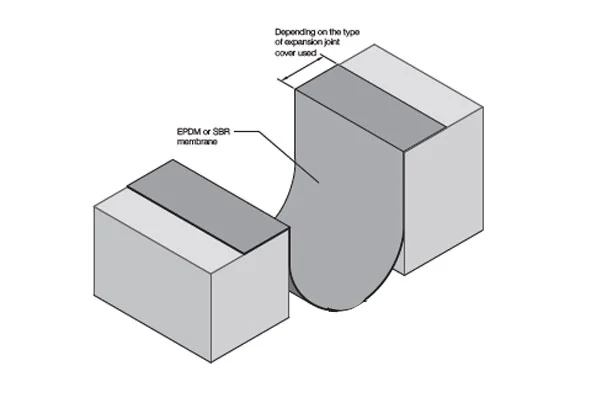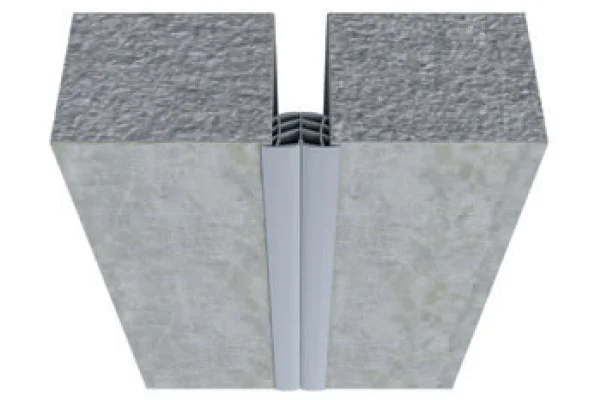
TRIR—total recordable incident rate—has long served as the standard metric for tracking workplace injuries. However, events with the potential to result in a serious injury and fatality—or SIF-potential—demand more attention than standard metrics provide. While TRIR has long been used as a benchmark for safety performance, it doesn’t reflect the presence of high-risk exposures that could lead to life-altering or fatal outcomes. TRIR remains a key safety metric, but recognizing and responding to SIF-potential events is essential for organizations committed to true safety excellence.
A Tale of Two Projects
For example, look at how an overreliance on TRIR can impact two separate jobsites. Both projects have worked 150,000 hours with a significant amount of high-risk activities including site work, steel erection, precast concrete and curtain wall installation.
Project A
In the first three months, this project had three recordable incidents, pushing its TRIR to 4.0–well above the industry average of 2.3 and the project goal of 1.0. The incidents included a shoulder strain from overhead work resulting in five days of restricted duty, an ankle sprain while walking through the site (prescription medication) and a laceration requiring six stitches. The project team responded appropriately, conducting thorough investigations, implementing corrective actions and communicating lessons learned. None of these incidents had the potential for more serious outcomes.
However, the spike in TRIR prompted leadership and the client to demand answers and a project recovery plan to address the incidents, creating tension and lowering morale across the jobsite. In contrast, from a safety professional’s perspective, the team is performing well: high-risk activities (HRAs) were identified, thorough job hazard analyses were developed, effective pre-shift briefings were conducted each day and, importantly, workers were empowered to speak up. Overall, inspection data showed that the highest-risk work was being well-executed—an important reflection of performance and culture that is not represented when looking at TRIR alone.
This situation shows that while a strong safety culture was established early in the project, the pointed emphasis on TRIR delivered a negative message and made it difficult to demonstrate to leadership that the project was operating safely. The elevated TRIR could have been handled differently with a more measured and informed response.
Project B
While performing similar high-risk work, this project experienced zero recordable incidents, resulting in a TRIR of 0. This looks great on paper, so leadership and the client are pleased, and the team is being praised for their efforts.
However, a closer look reveals several underlying issues on the jobsite. In one example, employees were observed working in an unprotected seven-feet-deep trench. The issue was addressed immediately in the field but occurred again one week later. During steel erection, workers were observed climbing out of aerial lifts resulting in significant fall exposures that persisted despite discussions and a change in frontline supervision. Finally, improper ladder use was widespread across the jobsite. On project B, leadership and supervision set a poor example by handling issues only in the moment without reporting and follow-up, while still pointing to TRIR as evidence of strong safety performance.
Because project B’s recordable rate stood at zero, the team leaned too heavily on TRIR as proof of success, failing to see the serious trends unfolding across the site and the steady decline of its safety culture.
The team on project B needs a major mindset shift. While no recordable incidents have occurred, the frequency of SIF-potential events is alarming. The project team must focus their efforts on identifying and planning high-risk work and ensuring it is executed as intended. Equally important, they must begin to reshape the safety culture on the project. Without this shift, it may only be a matter of time before a SIF occurs—whether on this project or the next one.
Changing the Narrative
All recordable incidents should be thoroughly investigated to identify causes and share lessons learned. Prevention efforts must also remain a priority to reduce the occurrence of such incidents altogether. However, relying too heavily on TRIR as the primary measure of success creates dangerous blind spots. On project B, the conditions and behaviors observed are far more serious and demand an equally serious response.
Each of these exposures carries significant SIF-potential. Conversely, on project A the client would have benefited from seeking additional context around the elevated TRIR before reacting in a way that threatened the safety culture.
In the construction industry, it is not enough to address SIF-potential events in the field and move on with the job. Project and leadership teams need to recognize, document and investigate each event with the same diligence as a recordable incident. There needs to be a shift in both mindset and practice to create an increased focus on HRAs to prevent a catastrophic outcome and enhance overall safety performance.
Challenge Your Organization
Most leadership teams and employees throughout an organization can quickly answer the following questions:
- What was your company’s recordable rate last year?
- How did last year’s recordable rate compare with the previous year?
- How does your company’s recordable rate compare to the industry average?
Answering the following question is more difficult in most organizations, but equally important:
- How many events occurred across your projects or sites last year that had the potential to result in a SIF?
To provide a more complete picture of performance and risk, organizations need to begin to look beyond–not replace–TRIR. Understanding how many SIF-potential events occurred over the last year, the activities that are resulting in SIF-potential events and which trade partners are most frequently involved in SIF-potential events would provide immense value and facilitate meaningful conversations internally and externally. Each identified event with SIF-potential provides a powerful learning opportunity and should not be overlooked.
Practical Tips for Getting Started
To start, educate leadership on why a SIF prevention program is essential. Emphasize the need to identify and investigate all events with SIF potential. While lowering TRIR remains important, data consistently shows that even with low TRIR, SIF risks persist and require focused action.
Highlight recent SIF exposures that have occurred on your sites or on your projects—share examples of near misses, incidents and exposures with SIF potential to make the case for change. Be transparent about the need for improvement and encourage leadership to honestly assess current gaps. Building a strong SIF prevention program takes time and involves several key steps:
- Clearly define what constitutes a SIF and SIF-potential event.
- Secure leadership support and educate your team to ensure alignment
- Identify the high-risk activities most commonly performed by your employees based on your company’s specific scope of work. Make sure they are getting the attention they deserve from a planning, training and execution perspective.
- Categorize and investigate SIF-potential events. If trade partners are involved, include them in the process.
- Use aggregated data to spot trends, share lessons learned and drive continuous improvement.
- Recognize teams and individuals that participate consistently in SIF prevention efforts–whether that means putting together a thorough plan for high-risk work or contributing to the investigation of a SIF-potential event.
Many organizations have invested significant time and resources on the topic of SIF prevention. Resources available from groups like the Construction Safety Research Alliance, the National Safety Council and others offer valuable guidance. The construction industry has had great success in reducing TRIR over the past three decades. With a similar focus on and commitment to SIF prevention, the goal is to see a similar decline in fatality rates.
Lowering TRIR remains a worthwhile goal, but it only tells part of the story. Organizations must also be asking and answering: How many SIF-potential events occurred this year? Which tasks or trades are involved most often? What are the failures of our management system that contributed to these events? Leadership teams that can answer these questions and emphasize the importance of identifying, training and planning for HRAs are better equipped to prevent serious harm before it happens.
SEE ALSO: THREE STEPS TO MINIMIZE HIGH INCIDENT RATES FOR LOW-RISK WORKERS
-
David Tibbetts is a certified safety professional and the chief safety officer at Highwire. His focus is on continued product development, client success and customer support with the goal of helping Highwire clients deliver contractor success through full-lifecycle risk mitigation. Tibbetts also served as the manager of construction safety in Harvard University’s Environmental Health & Safety Department, managing their construction safety program.
Highwire








